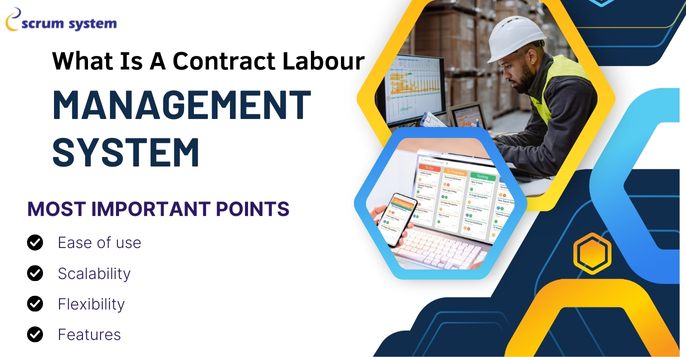Introduction
This creates mixed situations in business operations, mainly in industries that tend towards an elastic workforce while managing contract labor. A CLMS is a sophisticated solution to the management of this section of the workforce; it enhances compliance, efficiency, and strategic deployment of labor. This blog will look into the very definition of CLMS, clarifies its functionalities and benefits, and how it transforms an organization. We are going to see how these kinds of systems work as an integrated part of managing contractual obligations and workforce dynamics without ever referring to specific brand names.
Understanding Contract Labour Management Systems
1. Monitoring and Control
The Contract Labor Management Systems have the potential to make possible the proper tracking and management of contract labor in totally effective ways. Employee information, time attendance, overtime, and project allocation are recorded automatically. These processes are priceless for proper payroll record maintenance and fair practices in their work because they closely monitor the level of labor deployment and usage.
2. Compliance with Labor Laws
As is very evident, navigating the intricacies of labor laws and organizational policies forms a significant area of contract labor management. CLMSs facilitate strict compliance by incorporating the necessary checks automatically and maintaining an exhaustive audit trail for all the activities. This functionality reduces the risk of non-compliance and the resultant penalties while working towards the creation of an ethical work environment that strictly adheres to the legal standards.
3. Operational Efficiency
The ability to effectively manage labor, especially contract labor, is a pretty good determinant of how the business may perform. CLMSs really streamline so many processes relating to recruitment, onboarding, and everyday management of the contract workers. Indeed, this lightens administrative burdens and optimizes resource usage, making HR departments free up from more mundane to more strategic initiatives.
4. Payroll Automation
One of the most significant benefits of a CLMS is its ability to automate payroll processing. Many CLMS will have the ability to do complex wage, tax, deduction, and benefit calculations, which ensures accuracy and timeliness in payrolls. This helps to reduce errors and maintain worker satisfaction.
5. Security and Safety
CLMSs ensure safe and secure workplaces. It enforces and maintains security rules, keeps safety instruction certifications, and maintains them on record. Proper safety compliance management lowers the rate of cases of incidents in workplaces while increasing general safety at the workplace.
6. Insights and Analytics
The robust capabilities of collecting data with CLMSs make them provide helpful insights that are important for well-informed decisions. With workforce data, organizations can thus identify trends, forecast needs for labor and make strategic decisions to better manage their labor.
Scope Of The Contract Labor Management Systems
- Biometric Interfacing: Discusses how biometric technologies like fingerprint recognition are used in CLMSs to prevent unauthorized access and fraud, enhancing operational security.
- Complete Worker Profiles: Details how CLMSs maintain comprehensive worker profiles that include biometric data, personal information, and compliance records, simplifying labor management processes.
- Contractor and Work Order Management Covers how CLMSs facilitate contractor management and work order management, ensuring timely and proper fulfillment of contractual obligations.
- Training and Compliance Validation Discusses the integration of training modules and compliance validation in CLMSs to ensure that all workers meet required standards before commencing work, crucial for maintaining high safety and performance levels.
- Advanced Reporting Capability Explains how CLMSs provide sophisticated reporting features that allow stakeholders to receive timely reports and alerts on various activities, supported by real-time data synchronization and centralized data management.
- Technology and Platform Support Details the support for various database systems and operating platforms in CLMSs, highlighting the system’s flexibility for integration into diverse IT environments to enable broad adoption and scalability.
Conclusion
Contract labor management systems could potentially transform the contract labor business process in business organizations. Whether it is enhancing compliance or operational efficiency, or through deep analytical insights, CLMSs make essential elements in the current business organization landscape. Hence, the growing trend of businesses using contract labor necessitates adapting to cutting-edge technological solutions such as CLMSs, making these critical tools for strategic business management and overall operational success.



